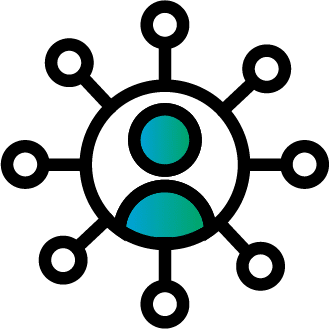Offer NEXTGEN TV services with the solution powering half of all ATSC 3.0 deployments across North America
Benefits

Deliver immersive experiences
With the highest quality at minimum bitrate, interactivity and personalized content

Future-proof your broadcasting headend
Optimize your ATSC 1.0 station and migrate to 3.0 when you want

Simplify your operations
Integrate easily with any ecosystem; support the new AWARN system
Why NEXTGEN TV?
Viewers now have ever more content to choose from – which they can receive and watch in many ways. As a broadcaster or a station, you need to provide more flexible services.
How to set up NEXTGEN TV
For years, Ateme has been helping broadcasters not only upgrade the quality of their ATSC 1.0 systems, but also deliver the future of television broadcasting by leveraging the full ATSC 3.0 potential, giving broadcasters a perfect platform to build on as they migrate.
Ateme’s NEXTGEN TV solution covers the complete processing and distribution scope: encoding, transcoding, statistical multiplexing, packaging and origin. It delivers the highest video quality at minimum bitrates and features a comprehensive video & audio codec support from MPEG-2, H264 to HEVC or the new SHVC, with HDR, MPEG-H 3D, and Dolby AC4.
Ateme’s NEXTGEN TV solution simplifies operations: it’s a solution for today’s market that continues meeting your needs as you grow
- Moving from ATSC1.0 to ATSC3.0
- Starting in SD or HD, moving to Full HD and UHD
- Adding audio extensions to 5.1 and NGA.
Our Products

Video Processing
What is NEXTGEN TV?
NEXTGEN TV is the moniker given to the new ATSC 3.0 standard. ATSC 3.0 is the fourth and latest standard for terrestrial (over-the-air) television in North America. It was finalized in 2017 and first launched in South Korea that same year. Like its predecessor, ATSC 1.0, ATSC 3.0 is a digital standard (video, audio and data are represented and transported digitally) but that is where the similarities end. Based on IP protocols, ATSC 3.0 uses more efficient encoding and transport technologies. It combines over-the-air broadcasts with broadband distribution to enable personalized content, targeted advertising, and interactive services – retaining both the efficiency of broadcast distribution and the flexibility offered by two-way broadband connections. Support for higher resolutions, greater picture contrast, deeper shades of color and immersive audio greatly enhance the user experience. These enhancements allow for new revenue models (such as premium services, transactional services as well as greater ad revenues due to better targeting).
In addition to South Korea, ATSC 3.0 is available in more than 50 metropolitan regions in the US, with many more to be added in the near future. It was also launched in January of 2022 in Jamaica. Brazil is using a number of ATSC 3.0 technologies for its TV 3.0 service, while India is considering it for direct to mobile services.

